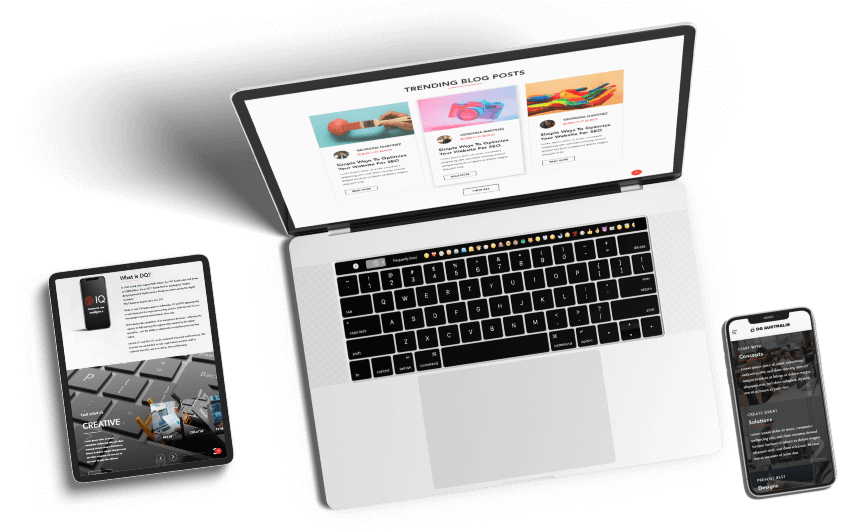July 24, 2020
THE OLD MEDIA THAT IS STILL GROWING
For many years now, naysayers have been predicting the demise of email as a marketing tool. But they were wrong when they started suggesting this ten years ago, and they are wrong in 2020. Indeed, email can be as effective a marketing tool in 2020 as it was in 2000 – and it can be even more effective when the opportunity is taken to personalise email marketing. Ponder these statistics–for all industries in Australia:
- Average open rate: 18.7%
- Average click-through rate: 2.8%
- Average click-to-open rate: 14.9%
- Average unsubscribe rate: 0.2%
- Average bounce rate: 1%
With these kinds of results, why would email not be considered a useful marketing tool? If you need more proof of the effectiveness of email marketing, consider the following:
- For every dollar spent on email marketing – the return is estimated at $38.00 .
And the following:
- Successful campaigns generate $42 for every dollar invested.
- Average campaigns generate $37 for every dollar invested.
But, as these last two statistics suggest, there is a world of difference between an average email campaign and a great email campaign. To maximise the return on investment – it is worth pondering the characteristics of a great email campaign. So, what are the features of a great email campaign? Well, many factors impact the effectiveness of an email campaign. They include:
- The database – the accuracy of the list, the completeness of the list and the cleanliness of the list. Questions – are you targeting the right people, and is their data accurate?
- Personalisation – the extent to which the email is customised to the individuals receiving it. Questions – is the email addressed by name and is the content customised?
- Interactivity – the incorporation of engaging, interactive components in the content. Question – does the email talk AT readers or engage them interactively?
- Distribution rate – ensuring that emails are sent out at a rate that suits the resources available to address enquiries. Question – can you comfortably manage all enquiries?
- A landing page – a link on the email to a high-quality customised landing page to drive the enquiry rate. Question – are recipients being taken to a customised landing page?
- The subject line – highlighting a point or issue that will facilitate opening without selling. Question – does the subject line engage readers without selling or using hype?
- The language – using language that is tailored to the audience – without jargon, hyperbole and platitudes. Question – is the language in the email – the language of the recipient
- The times of day – the time of day can have a significant impact on opening rates. Question – are readers receiving the email at a time of day that will encourage opening
- The day of the week – the day of the week can affect opening and click through rates. Question – is the email being received on a day that maximises opening rates.
On
this last point, consider these statistics for Australia:
- Best day for highest email open rates: Saturday 19.6%.
- Best days for highest click-through rates: Monday, Wednesday, Thursday, and Saturday 2.9%.
- Best days for highest click-to-open rates: Monday, Wednesday, and Thursday 15%.
- Best day for lowest bounce rates: Tuesday 0.8%.
- Best day for lowest unsubscribe rates: all days were 0.2%.
- Worst day for lowest email open rates: Sunday 18.3%.
- Worst day for lowest click-through rates: Sunday 2.7%.
- Worst days for lowest click-to-open rates: Sunday, Friday, Saturday 14.8%.
- Worst day for highest bounce rates: Saturday 1.2%.
- Worst day for highest unsubscribe rates: all days were 0.2%.
These points and statistics highlight two things:
- Email marketing remains a powerful marketing tool.
- Email marketing is now more science than art.
The volume of email people receive is not a real barrier to the effectiveness of an email campaign. The real obstacle to the success of an email marketing campaign is to keep on doing what you have always done – and failing to embrace the science that email marketing requires in 2020. To help address this science there is real value in:
- Engaging a consultant who understands it is a science more than an art.
- Using one of the plethora of email automation platforms currently available.
On
the second point, consider the following statistics:
- 51% of companies are using email automation to save time and money.
- Automated emails get click rates 119% higher than broadcast emails.
- Sending an automated welcome email series can increase revenue by 13%.
- Automated birthday email offers can boost conversion rates 60%.
Among the more popular email automation platforms on the market in 2020 are:
- Mail Chimp (a basic option)
- OptinMonster
- HubSpot
- LeadSquared
There is almost certainly value in seeking advice on the platform that best suits your requirements.
In summary, email marketing remains a powerful marketing tool. Ensuring success in 2020 requires an understanding of increasingly sophisticated science. Automation and professional advice can most certainly help in maximising return on investment.
The next blog in this series will look at two new avenues for communicating in 2020.


